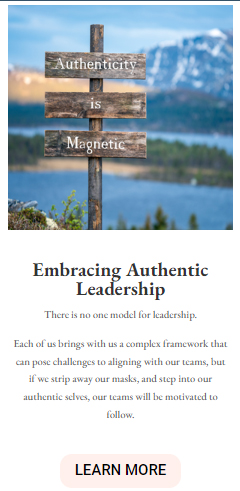When we interact with difficult people or situations, we experience emotions. These feelings provide us with motivation to change how we interact with others. If we were to silence or stuff these feelings, we would eventually make ourselves sick. Research shows that emotional distress has a significant impact on physical function, and given that we need to be able to rely on our bodies, we don’t want to harbor negative feelings and generate physical consequences.
Strategies and Techniques for Dealing with Difficult People
Identifying difficult people by type
There many labels assigned to types of difficult people, and those labels vary depending on where the information is coming from! A few of the most common types of difficult people appear below:
- Bullies/Aggressive types: These folks tend to be hostile and angry and throw their weight around to get their way. How you feel is of no value; they are focused only on what is important to them.
- Gripers/Complainers: These types complain about the things that they don’t like or agree with, but rarely take action to change things. They depend on others to make things different.
- Silent/Passive types: These people may have deep feelings about issues, but you’d never know, because they don’t engage. They are most likely to answer with “yes” or “no” to your questions and will rarely offer more input even when pressed.
- Very nice people/Sickly sweet types: These folks are pretty ingratiating on the surface, but do what they want to do when it comes down to the wire. They often make empty promises.
- Yes, but’ters: These people are all ears for new ideas, but always have a “Yes, but…” waiting in response. They won’t allow things to change, likely because change scares them (deep down…).
- I know better types: These folks believe that they know everything, and no matter what kind of expert you are, they will try to give you advice. They tend to be condescending and egotistical and you are likely to think of them as narcissistic.
- Stallers: put things off until someone else takes action. Something else always needs to be done before a decision is made, and often the delay engages someone else to act.
- Snipers: may be very charming and engaging on the surface, but will take potshots at you in public and in private whenever they have an unresolved issue. These “backstabbers” will verbally strike you, and you’ll never have seen it coming.
Becoming an effective communicator depends on how flexible you are and how well you can shift your style depending on who you’re dealing with! For example, if you think that responding to an aggressive bully with contempt and aggression will call his/her bluff, you’re wrong. Don’t pull the tiger’s tail if you want him to walk your way. The tiger won’t like it, and neither will you.
Effective coping strategies for dealing with difficult people
- with Bullies: Be assertive. Don’t back down, but don’t try to intimidate.
- with Gripers: Hear them out and be empathic. Then ask what it is specifically that you can do to assist them.
- with Silent types: Always ask open-ended questions to which “yes” or “no” would not be a response option. If they respond with a “no”, identify your position or plans.
- with Very nice people: Try to be accepting of them, then find out what their ulterior motive is (assertively!)
- with Yes, but’ters: Identify all strategies that won’t work before they have the chance to. Then, follow-up with a concise description of strategies or plans that will work.
- with I know better types: Research your position and have the data at hand when you enter the confrontation. Prepare in advance, responses to any potential conflicts or problems that you can foresee.
- with Stallers: Collaborate to identify the real problem for the delay. Offer your input and ask for theirs.
- with Snipers: These folks tend to feel pretty powerless inside, and attempt to control others passively. Try giving them the respect that they deserve, and together determine what the real issue is and negotiate a solution.
Communicating assertively
All relationships benefit when you can communicate assertively, but remember, there are some situations where it may be difficult to assert yourself. Be aware of potential obstacles to assertiveness before you enter a confrontation. Assertive communication is that in which each party’s opinion is respected and accepted, and where each party’s needs and desires matter. This differs from aggressive communication in which one person dominates the other. It also differs from passive communication, in which one person concedes to the other.
Clearly defining problems/conflicts
Another strategy that may be helpful when dealing with difficult people is to clearly define problems and conflicts as they arise. Effectively communicating that there is a problem requires two steps:
- Attitude: It is in your best interest to adopt the attitude that:
- problems are a normal part of living
- problems are generally personally- they don’t arise just to piss you off or ruin your day
- it is possible to cope with problems as they arise
- you can identify rather than deny problems as they arise
- it is better to avoid quick, impulsive responses to problems
- Problem definition:
- Identify the problem clearly and in concise parts or segments if that is appropriate.
- Designing and implementing effective confrontations
When you deal with difficult people, you will eventually engage in confrontations. Confrontation has been given a negative rap– these incidents don’t have to be uncomfortable and “bad”; you just have to learn a set of techniques for making confrontations effective to get positive results. We have to remember that our thoughts can get us into trouble, and if we have core beliefs that confrontation is always bad, we’ll have to address these beliefs before we’re successful with confrontation. There are several confrontation styles that may be useful when dealing with difficult people. These include:
- Information confrontation: When there is some misunderstanding or the person has been misinformed.
- Experiential confrontation: When two or more people respond differently to a situation.
- Strength confrontation: When a person is underestimating his/her power or value.
- Encouragement for action: When the person just needs a gentle push to succeed.
Know that confrontation requires some kind of relationship foundation. If you have no relationship with the person, try to take an assertive posture, but realize that you are dealing with an unknown. Confrontation, when approached positively, can bring people closer, so heed these tips for effective confrontation:
- Choose the right time and place (a private setting usually allows people to speak more freely. However, if you’re dealing with a bully, you may want to select a low-traffic, public area).
- Be a good listener. After giving the person time to summarize his/her position, ask questions to determine if you have an accurate understanding.
- Know that taking a defensive posture typically doesn’t pay off in the end. It just gives the other person a place to dig in.
- Be willing to compromise (before you even begin).
- Require and provide appropriate respect.
- Be assertive rather than combative.
- Provide constructive criticism (remember that confrontation should be for the good of the other party).
- Criticize the behavior rather than the person.
- When confronted, don’t respond impulsively. Count to ten if you need to.
Releasing anger in a healthy fashion
When the difficult person that you’re dealing with is part of your daily life, it is important to cope with the situation quickly and effectively. When you have an investment in a relationship with a difficult person, anger is likely to be a natural consequence of engagement. Deal with your anger instead of denying it. Just as with confrontation, your core beliefs about anger will impact how you express it (or don’t!!!). Releasing anger is important to your mental and physical health. Follow these steps for healthy anger release:
- Admit that you feel angry (first to yourself, then when appropriate, to the other person)
- Count to 10, 20 or even 100 before engaging when you are angry (1000 if it takes you that long to simmer down!)
- Stop, look, and listen.
- Stop: Take some time to determine the cause of your anger. Discard any cover stories that might be veiling the real source of your anger.
- Look: Take a look at the incident and determine what part, if any, you had in it.
- Listen: By learning to become aware of the things that trigger your anger, you can deal with these issues and let go of less important or insignificant ones.
- Give the other person the benefit of the doubt. Is it possible that he/she wasn’t trying to provoke you??? What if his/her actions or words weren’t personal?
- Be assertive and express your anger in a clear, concise way. Use this assertive statement block,
- “When you ________________________________, I feel angry.
If you would ______________________________, I would feel ________________.
- Try some vigorous exercise to blow off some steam so that the anger doesn’t get directed at your body or anyone else’s!
- Cut your losses. If you have expressed your anger effectively and you have used appropriate techniques for confronting a difficult person, and the person continues to resist or poses a problem, try a new tactic. If there is no hope in sight, move on to a less anger-provoking interaction.
- Allow yourself to let go. Once you’ve made a real attempt to deal with the incident, give yourself the gift of moving on.
- Reward yourself when you make a successful attempt to release anger.

Sage Breslin is a prolific author. Her first book, Lovers & Survivors, as well as her work with Chicken Soup for the Soul, LLC have generated worldwide acclaim. Her second and third books, The Secret to Conception and The Secret to Conception Workbook, have enabled hundreds to resolve fertility challenges. Her fourth book, Daily Pearls: 365 Days of Sage Wisdom, blends Dr. Breslin’s musings with motivational quotes from a wide array of contributors and delivers an unforgettable and moving read. Her narrative storytelling style enables readers to experience life as she has lived it, and delivers the inspirational message so imperative for post-traumatic growth. While her colorful life has imbued her with perspective and insight, Dr. Breslin acknowledges that true wisdom is gained through collective conscious community. Her most recent book takes an even deeper dive into enabling conscious leaders to break through cognitive, emotional and energetic barriers to achieve authentic, empowered leadership. The importance of this form of transformational work is evident: Breaking Through: The Conscious Leader’s and Entrepreneur’s Guide to Amplify Intuition, Clarity, Vision, Motivation and Productivity hit best-seller status within 24 hours!









